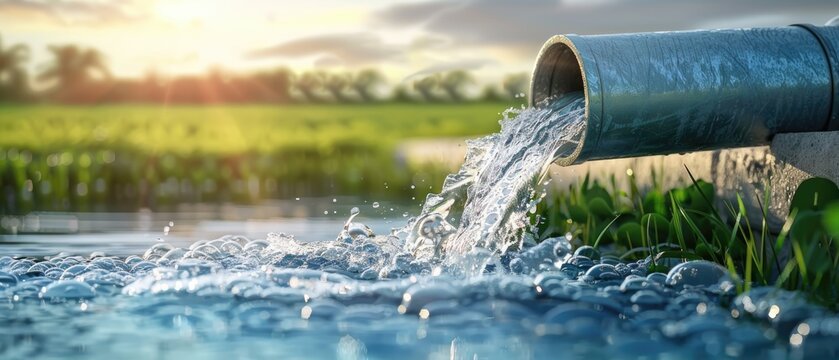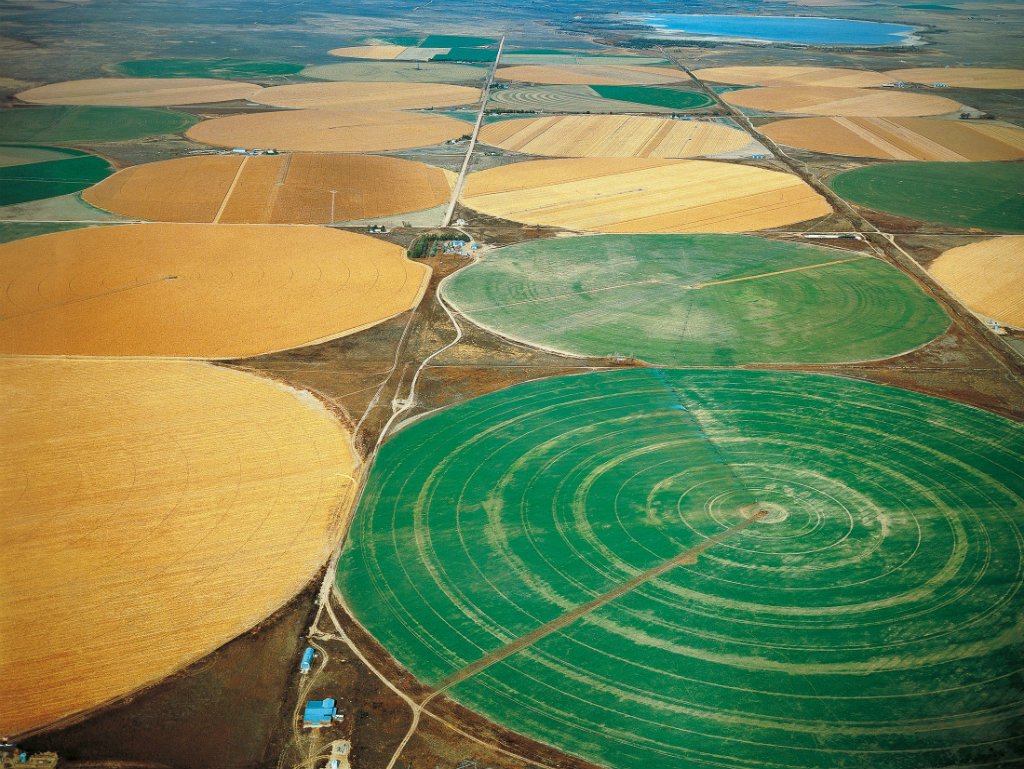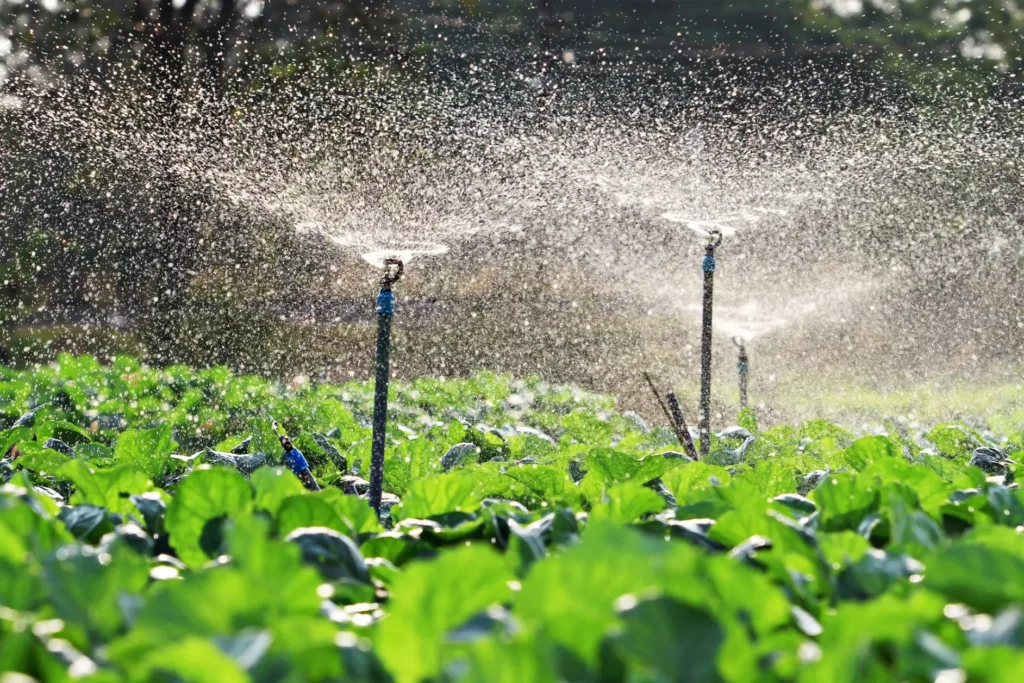Thursday, 13 November 2025


From Punjab to Paraná, aquifers are silently collapsing under the weight of modern agriculture. Yet the world’s food systems remain dangerously dependent on groundwater—a resource long considered infinite, now revealing its limits. As irrigation expands, rainfall becomes erratic, and global trade scrutinizes embedded water footprints, a radical rethink is underway. To unpack this inflection point, Agrospectrum spoke to Bernhard L. Kiep, Managing Director at Bermad Brazil and a key board member across pioneering platforms like Pessl Instruments, MAIZALL+ Abramilho, InLida and InstaAgro. A Business Administrator by training and an agri-innovator by conviction, Kiep offers a panoramic yet grounded take on the future of farming in a water-constrained world.
India: Aquifer Stress Meets Agri Ambition

India extracts over 250 cubic kilometers of groundwater annually—more than the U.S. and China combined. But its irrigation remains notoriously inefficient. What structural reforms are most urgent?
The numbers speak for themselves: nearly 90 per cent of groundwater extracted in India goes to agriculture, and much of it is wasted through unlined canals, flood irrigation, and poor scheduling.
India needs a layered approach. First, introduce real-time groundwater monitoring networks—what we in Brazil call the aquifer accounting layer. You can’t manage what you can’t measure. Second, decentralize water governance. India’s federal and state coordination on water is still weak. District-level groundwater stewardship councils, composed of hydrologists, farmers, and panchayat leaders, could radically shift behavior.
However, most critically—unlock access to technology finance. The best technologies—pressure-compensated drippers, soil-moisture sensors, variable rate fertigation systems—are already available. But a smallholder in Vidarbha or Bundelkhand cannot afford a Rs 75,000 system. The answer lies in government-backed payment guarantees for suppliers and credit lines where repayment is indexed to water saved, not just yields.
India has one of the world’s largest drip irrigation coverage areas, yet adoption remains uneven. What are the real barriers to scale?
We often conflate installation coverage with active, optimized use. A large portion of India’s drip systems lie underused due to poor after-sales service, lack of agronomic advisory, and power outages that disrupt pressure dynamics. We must move toward closed-loop systems where: Drip irrigation is sensor-controlled based on real evapotranspiration rates; Fertilizer is injected with precision in microdoses (nutrigation); Water use is metered and priced modestly to reflect scarcity.
The central problem isn’t technological—it’s behavioral and financial. In Israel, they made hydraulics and fluid mechanics a part of primary education. Every schoolchild understands the math of a leak. In India, we need to create the same water literacy revolution, especially among rural youth.
India’s agri-export growth is being questioned for its water footprint. Should the country revise its export priorities based on aquifer stress?
To answer this question the first thing that needs to be done is to calculate the value /volume of the water, labor and general efficiency and see if the export revenue makes an economical and sustainable sense. Just calculating the amount of water used per kilogram of food is not the correct answer ! However, we can’t frame this as simply abandoning certain crops. Instead, we must: Diversify the export basket toward crops like millets, oilseeds, and legumes that are less water-intensive; Promote water footprint labelling to help buyers make informed decisions; Shift subsidies from crop-based incentives to resource-use-based incentives.
Designing a ‘Groundwater Positive’ District in India- If you could co-create one, what technologies and policies would you deploy?
Here’s what I would include:
First, hydrological intelligence grid—real-time borewell-level telemetry integrated with rainfall and cropping patterns.
Second, zero-leakage infrastructure—all canals lined, community ponds renovated, pressure-managed micro-irrigation promoted.
Third, water-linked credit access—loans indexed to water savings, not land size; payments to tech providers guaranteed by public finance instruments
Fourth, behavioral nudges—water tariffs (even symbolic) to instil accountability; water budgeting workshops in villages.
Fifth, tech cooperatives—shared ownership of fertigation units, digital dashboards, mobile labs—so no farmer is left behind.
In short: Make water management aspirational, affordable, and accountable.
United States: Farming the Dust Bowl Again?

The Ogallala Aquifer—lifeline of the U.S. grain belt—is shrinking. What lessons should the United States draw from its own Dust Bowl history and what it has done since?
The story of the Ogallala Aquifer is a study in both ecological overreach and policy reinvention. Stretching beneath eight states—from South Dakota to Texas—the Ogallala once supported nearly 30 per cent of U.S. irrigated agriculture, including America’s wheat, corn, cotton, and beef industries. However, decades of over pumping—especially during the post-World War II agricultural boom—brought the aquifer dangerously close to collapse in several zones.
By the 1990s, in states like Kansas and Texas, water tables had dropped by more than 100 feet in some places. The 1930s Dust Bowl was no longer just history—it was a looming sequel.
However then came a paradigm shift. Farmers, policymakers, and water managers didn’t wait for federal mandates. They created localized, stakeholder-driven water governance models that offer a blueprint for other countries, including India.
Key lessons from the Ogallala experience:
First, Decentralized Aquifer Governance:
Instead of top-down imposition, states like Kansas established Groundwater Management Districts (GMDs)—democratically elected bodies where farmers had direct control over water policies in their region. These GMDs could set pumping limits, incentivize recharge, and even coordinate collective water-saving efforts.
Second, Transparent Monitoring and Enforcement:
Over 95 per cent of wells in Nebraska and Kansas are now monitored using flow meters, telemetry, and satellite verification tools. Water rights are digitally tracked, and violations are recorded transparently. Unlike in India, where many borewells are unregistered, Ogallala states treat water as an accountable public asset.
Third, Water Allocation Caps and Incentives:
In Sheridan County, Kansas, for instance, an innovative pilot known as the Local Enhanced Management Area (LEMA) helped farmers voluntarily reduce water use by 20 per cent over five years—without any drop in yields. How? Through precision irrigation, crop-switching, and rotation-based planning backed by state-verified savings certificates.
Fourth, Water as Currency—The Banking Analogy:
Ogallala farmers now understand that groundwater is like money in a savings account: withdrawals must be lower than deposits. Some states allow “water banking”—where conserved water in one season can be stored (on paper) and withdrawn in drier years, mimicking fiscal budgeting.
Fifth, Civic Engagement, not Bureaucracy:
Farmers weren’t just passive implementers—they were co-creators of water policy. Peer-to-peer pressure often proved more effective than fines. The community structure instilled shared responsibility, which India currently lacks due to fragmented jurisdictions.
Can such a model work in India?
Yes, but with adaptations. India must build community aquifer associations—like Farmer Producer Organizations (FPOs), but with water as the common currency. These groups should: Set local pumping norms; Monitor rainfall-aquifer recharge ratios; Maintain shared water infrastructure; Engage in real-time water budgeting.
However, the backbone must be reliable data infrastructure—telemetry wells, flow meters, satellite-aided monitoring systems—integrated into district-level dashboards. India’s National Aquifer Mapping Programme (NAQUIM) is a start, but it needs farmer-facing digital extensions.
With the Inflation Reduction Act unlocking billions for climate-smart farming, is the U.S. beginning to monetise water stewardship like carbon programs?
The Inflation Reduction Act (IRA), passed in 2022, allocated over $20 billion for climate-smart agriculture, including soil moisture conservation, cover cropping, and water-use efficiency. This marks a pivotal moment—water savings are no longer just good practice, they are economic assets.
There is growing interest in turning verified water savings into tradable credits—akin to carbon markets. While this market is nascent, it signals a shift from compliance-driven to incentive-driven stewardship. However, caution is needed. If these systems rely solely on subsidies, we risk killing entrepreneurial initiative. Farmers must feel empowered, not dependent.
That’s why I believe in the EESG framework—where: Environment protection is integrated with Economics of sustainability, Social equity in rural communities, and Governance via participatory institutions. This is not just a Western template. With tailored execution, India’s sugar belts, Mexico’s maize plains, and Kenya’s tea highlands can all adapt the Ogallala model.
In summary: The Ogallala experience shows that groundwater conservation is not a sacrifice—it’s an investment. With local governance, transparent metering, and data-powered feedback loops, aquifers can be stabilized without sacrificing yields. But the first step is to acknowledge that business-as-usual is no longer sustainable.
Brazil: Abundant Rain, Emerging Risk

Brazil is often viewed as a water-abundant nation. But regions like the Cerrado and Northeast are under growing water stress. Is Brazil prepared for an irrigation-centric future?
The illusion of abundance is deceptive. While Brazil holds 12 per cent of global freshwater reserves, water access is highly skewed. The Southeast and Northeast, where much of Brazil’s food and export crops are grown, are increasingly hydrologically fragile. Western Bahia, a booming agricultural frontier, illustrates the looming crisis vividly.
Rainfall in the region, once as high as 1,800 mm/year, has been declining steadily since the 1980s, now averaging as low as 950 mm in some parts. Satellite and field data reveal that irrigation withdrawals in Western Bahia surged from ~30 m³/s in 2001 to 76 m³/s in 2020, far outpacing aquifer recharge rates.
A major study on the Urucuia Aquifer, one of Brazil’s critical groundwater reserves, shows: Total recharge: 607.8 m³/s; The amount 121.6 m³/s is effectively available; Just 12.4 m³/s is formally granted for use—a mere 10 per cent of what could be sustainable.
This gap between hydrological potential and actual governance is Brazil’s Achilles’ heel. At Bermad Brazil, we’ve worked with over 3,000 farmers across +100,000 hectares of irrigated land using: Advanced valve-control systems; Precision fertigation aligned with crop uptake curves; SCADA-linked telemetry for remote water flow optimization.
However, nationally, less than 20 per cent of Brazil’s irrigable potential is in use. In Mato Grosso, for example: Out of 10.3 million ha of potential irrigable area, only 178,000 ha are under irrigation (as of 2019). Causes range from lack of tradition, unclear water rights, and external financing bottlenecks.
Brazil’s irrigated area is growing by 5,000–6,000 ha per year in Western Bahia alone, and projections suggest: +829,000 ha of expansion in the short-term (Scenario I); +620,000 ha possible in the longer term (Scenario II).
However, the question looms: If we measure and understand that some years with more rain, we can irrigate during the following dry season more we will be in harmony with Nature, what we can not do is nothing and not use the watershed to feed the World. Use today’s technology in a smart way to have economical prosperity + sustainability !
How is Brazilian agribusiness approaching irrigation from a resilience—not just yield—perspective?
There’s a visible transition underway. High-performing agribusinesses, especially in soy, sugarcane, and cotton, are shifting toward climate-smart irrigation as a competitiveness strategy. These include: Smart Pivot Irrigation with no till practice has improved Organic material in the soil by more than 50 per cent in less than 2-3 years; Drip-to-drone integration: Canopy stress imaging from drones triggers subsoil drip irrigation with surgical precision; Digital twins of irrigation networks: Simulate hydraulic losses and fine-tune runtimes; Nutrient-water synchrony: Fertilizer dosing is guided by real-time crop growth models, not seasonal guessing.
Our experience at Bermad shows that in a broad-spectrum when smart irrigation is implemented holistically: Yields rise by +35 per cent; Water use drops by 40 per cent; Energy costs fall by 25 per cent
Could Brazil and India collaborate on water governance through BRICS+ channels?
Absolutely—and not just in principle. There are already active policy exchanges between Brazil’s ANA (National Water Agency) and Indian think tanks. The recent territorial study visits to Nebraska (2022–2024) by Brazilian stakeholders underscore the appetite for learning from global best practices like the Natural Resources Districts (NRDs) model.
Brazil has one clear institutional edge: Faster irrigation financing. A farmer can secure funding for water infrastructure, thanks to: Digitized farm records; Streamlined agri-lending; Fewer bureaucratic layers.
India, in contrast, is hampered by delayed credit, fragmented water governance, and slow aquifer data integration.
A South-South Water Innovation Platform (India–Brazil–South Africa) could focus on: Aquifer-based irrigation credit models; Joint development of real-time water-use monitoring tools; Blended capital pools for scalable water-tech. By collaborating, nations could shift from being technology takers to becoming innovation architects for groundwater stewardship.
—- Suchetana Choudhury (suchetana.choudhuri@agrospectrumindia.com)